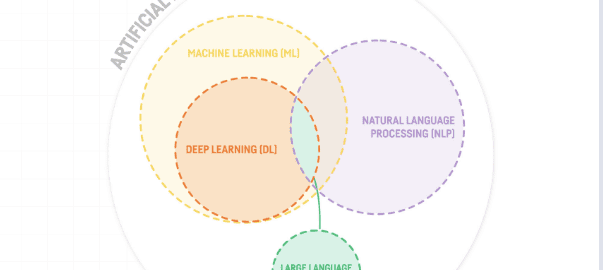April 19, 2023 /Technology/ — A large language model (LLM) is a type of artificial intelligence (AI) that is trained on a massive amount of text data. This data can be anything from books and articles to social media posts and code. LLMs are able to learn the statistical relationships between words and phrases, which allows them to generate text, translate languages, write different kinds of creative content, and answer your questions in an informative way. LLMs can be used for a variety of tasks, including:
- Natural language processing (NLP): LLMs can be used to understand and generate human language. For example, they can be used to translate languages, write different kinds of creative content, and answer your questions in an informative way.
- Machine learning (ML): LLMs can be used to train other AI models. For example, they can be used to train models for image recognition, speech recognition, and fraud detection.
- Research: LLMs can be used to explore new areas of AI research. For example, they can be used to develop new algorithms for natural language processing and machine learning.
LLMs are developed using a process called deep learning. Deep learning is a type of machine learning that uses artificial neural networks to learn from data. Neural networks are inspired by the human brain and are able to learn complex patterns from data.
To develop an LLM, researchers first need to collect a large dataset of text and code. This dataset can be collected from a variety of sources, such as books, articles, websites, and code repositories. Once the dataset is collected, it needs to be cleaned and formatted. This process involves removing errors from the data and making sure that it is in a format that can be used by the LLM.
Once the data is cleaned and formatted, it can be used to train the LLM. The training process involves feeding the LLM the data and allowing it to learn from it. This process can take a long time, as the LLM needs to process a lot of data.
Once the LLM is trained, it can be used to perform tasks such as natural language processing, machine learning, and research.
Here are some of the benefits of using LLMs:
- They can generate text that is more natural and human-like than text generated by traditional machine learning models.
- They can be used to translate languages more accurately than traditional machine translation systems.
- They can be used to write different kinds of creative content, such as poems, code, scripts, musical pieces, email, letters, etc.
- They can be used to answer your questions in an informative way, even if they are open ended, challenging, or strange.
Here are some of the challenges of using LLMs:
- They require a massive amount of data to train.
- They can be computationally expensive to train and run.
- They can be biased, reflecting the biases in the data they are trained on.
- They can be used to generate harmful content, such as hate speech or misinformation.
LLMs are a powerful tool that can be used to solve a variety of problems. However, it is important to note that LLMs are still under development and can sometimes make mistakes. It is important to use LLMs responsibly and to be aware of their limitations.
Search related topics

